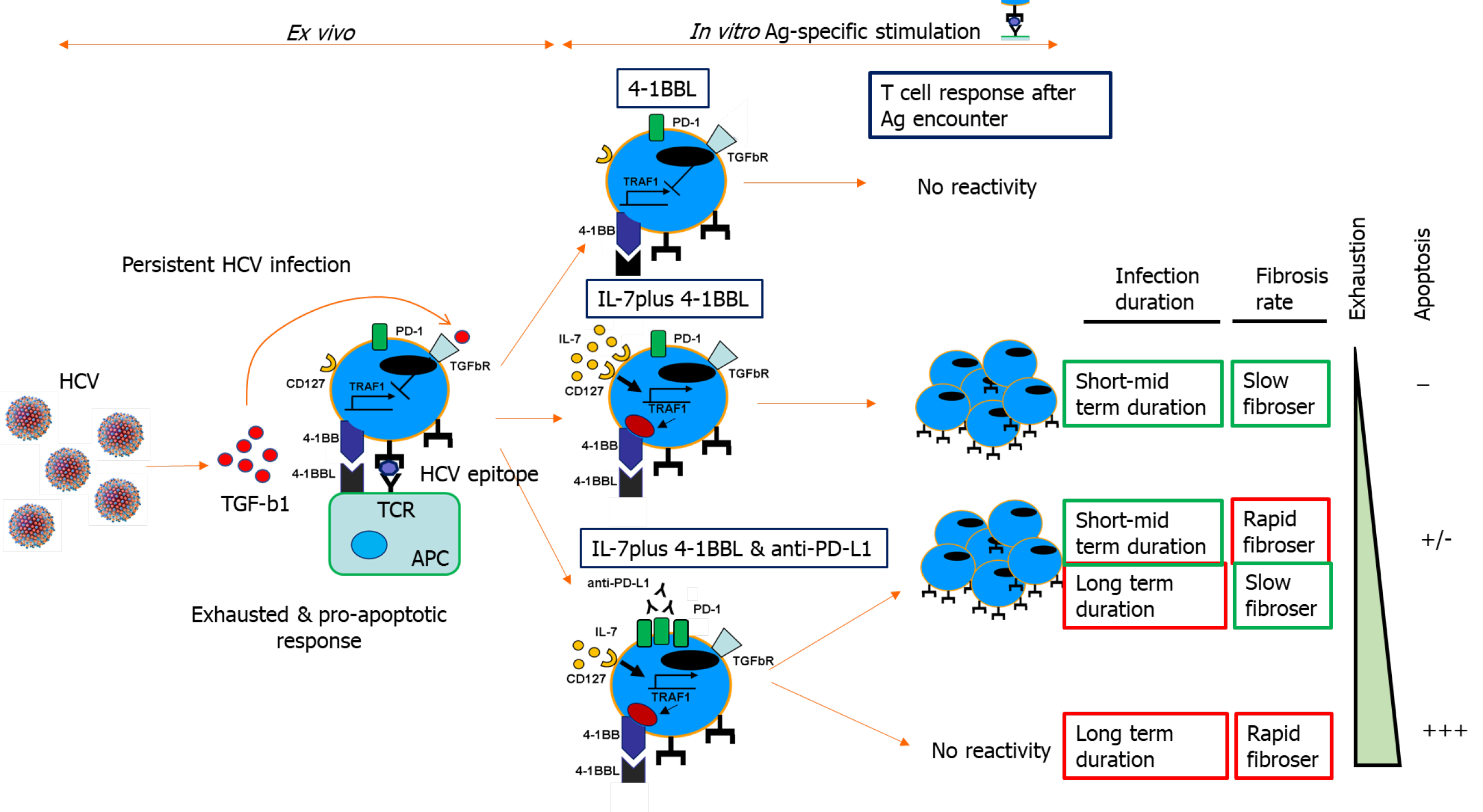Copyright
©The Author(s) 2020.
World J Hepatol. Oct 27, 2020; 12(10): 754-765
Published online Oct 27, 2020. doi: 10.4254/wjh.v12.i10.754
Published online Oct 27, 2020. doi: 10.4254/wjh.v12.i10.754
Figure 5 Tumor necrosis factor receptor-associated factor 1-related pathogenic mechanism involved in T cell exhaustion and liver fibrosis progression during persistent hepatitis C virus infection.
Scheme showing transforming growth factor beta 1-mediated CD8 T cell impairment during chronic hepatitis C virus infection due to tumor necrosis factor receptor-associated factor 1 (TRAF1). In patients with mild clinical progression, T cell reactivity can be restored by TRAF1 upregulation with interleukin (IL)-7 treatment. Those with rapid fibrosis or with long-term infection need IL-7 treatment combined with programmed cell death protein 1 blockade. Cases with rapid fibrosis and long infection duration cannot be restored, probably due to T cell deletion. Ag: Antigen; 4-1BB: Tumor necrosis family receptor superfamily member 9; 4-1BBL: 4-1BB-ligand; PD-1: Programmed cell death protein-1; HCV: Hepatitis C virus; TRAF1: Tumor necrosis factor receptor-associated factor 1; TGF: Transforming growth factor; IL: Interleukin; APC: Antigen-presenting cell; TCR: T cell receptor.
- Citation: Peña-Asensio J, Sanz-de-Villalobos E, Miquel J, Larrubia JR. Tumor necrosis family receptor superfamily member 9/tumor necrosis factor receptor-associated factor 1 pathway on hepatitis C viral persistence and natural history. World J Hepatol 2020; 12(10): 754-765
- URL: https://www.wjgnet.com/1948-5182/full/v12/i10/754.htm
- DOI: https://dx.doi.org/10.4254/wjh.v12.i10.754









